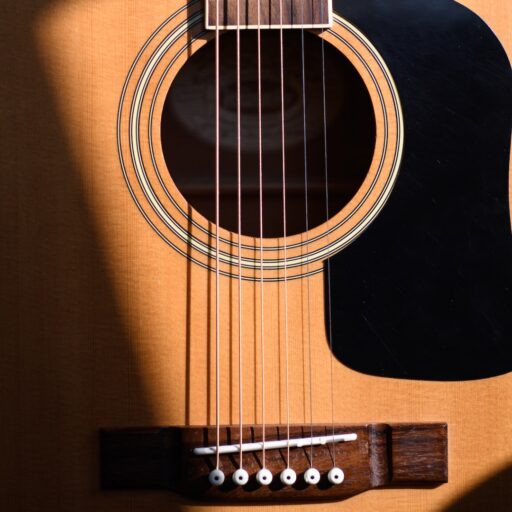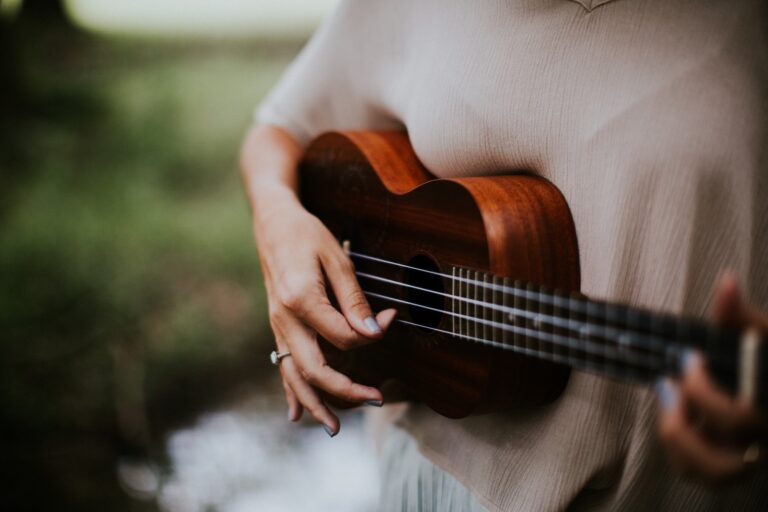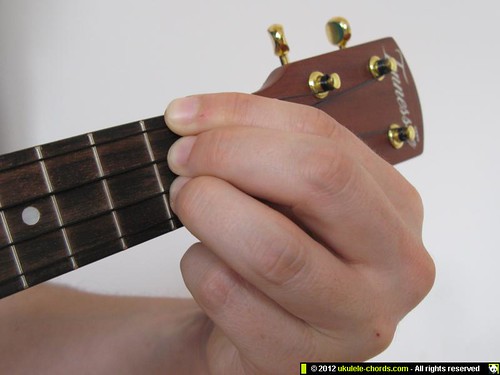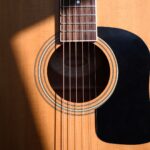Support our educational content for free when you purchase through links on our site. Learn more
What Is Standard Tuning for Ukulele? 🎸 Unlock the Secrets (2025)
Ever picked up a ukulele and wondered, “Wait, how exactly should I tune this little wonder to get that iconic island sound?” You’re not alone! At Guitar Brands™, we’ve tuned hundreds of ukuleles, and mastering the standard G-C-E-A tuning is the golden ticket to unlocking the ukulele’s bright, cheerful voice. But did you know that the top G string is actually tuned higher than the C string? This quirky “re-entrant” tuning is what gives the ukulele its signature sparkle — and it’s a game-changer for beginners and pros alike.
In this comprehensive guide, we’ll dive deep into everything you need to know about standard ukulele tuning, explore popular tuning variations, share expert tips on tuning like a pro, and even reveal how guitarists can leverage their skills on the uke fretboard. Curious about the best clip-on tuners or strings to keep your uke perfectly in tune? We’ve got you covered with trusted gear recommendations and troubleshooting hacks. Ready to make your ukulele sing? Let’s tune in!
Key Takeaways
- Standard ukulele tuning is G-C-E-A, with the 4th string (G) tuned higher than the 3rd (C), creating the ukulele’s unique bright tone.
- Re-entrant tuning sets the ukulele apart from guitars and other stringed instruments.
- Popular alternative tunings include D tuning, low G tuning, and baritone tuning, each offering different tonal flavors.
- Using a clip-on tuner or smartphone app designed for ukuleles makes tuning fast and accurate.
- Guitarists can transfer many chord shapes and skills but should be mindful of the ukulele’s four-string layout and re-entrant tuning.
- Essential accessories like Aquila Nylgut strings and quality tuners (Snark, KLIQ) help maintain stable tuning and great tone.
Ready to tune up your ukulele? Check out the best tuners and strings here:
- Clip-On Tuners: Snark SN5X | KLIQ UberTuner
- Ukulele Strings: Aquila Nylgut Strings | Martin Ukulele Strings
Table of Contents
- ⚡️ Quick Tips and Facts About Standard Ukulele Tuning
- 🎶 The Origins and Evolution of Ukulele Tuning: A Brief History
- 🔍 What Exactly Is Standard Tuning for Ukulele?
- 🎸 5 Popular Ukulele Tuning Variations and When to Use Them
- 🎯 Why Standard GCEA Tuning Is the Go-To for Beginners and Pros Alike
- 🔧 Step-by-Step Guide: How to Tune Your Ukulele Like a Pro
- 🎼 Mastering the Fretboard: Navigating Notes and Chords in Standard Tuning
- 🤔 Applying Guitar Chord Shapes to Your Ukulele: What Works and What Doesn’t
- 🎤 Playing Your Favorite Songs in Standard Ukulele Tuning: Tips and Tricks
- 📍 Where to Learn Ukulele Tuning and Playing in NYC and Beyond
- 📱 Stay Connected: Best Apps and Online Tools for Ukulele Tuning
- 🎯 Troubleshooting Common Ukulele Tuning Problems
- 🛠️ Essential Ukulele Accessories to Keep Your Instrument in Tune
- 📚 Conclusion: Why Mastering Standard Ukulele Tuning Unlocks Your Musical Potential
- 🔗 Recommended Links for Ukulele Tuning and Learning
- ❓ Frequently Asked Questions About Ukulele Tuning
- 📖 Reference Links and Resources
⚡️ Quick Tips and Facts About Standard Ukulele Tuning
Welcome to the wonderful world of ukulele tuning! At Guitar Brands™, we’ve tuned more ukuleles than we can count, and here’s the skinny on the standard tuning that every uke player should know:
- Standard tuning for ukulele is G-C-E-A, often called “C tuning” or “re-entrant tuning”.
- The G string is tuned higher than the C string, giving the ukulele its signature bright, jangly sound.
- This tuning works perfectly for soprano, concert, and tenor ukuleles. Baritone ukuleles usually use a different tuning (D-G-B-E).
- Most ukulele songbooks, tabs, and tutorials assume G-C-E-A tuning, so it’s your best bet if you want to jam along easily.
- You’ll find many online tuners and apps designed specifically for this tuning, making it a breeze to stay in tune.
Pro Tip: Always tune your ukulele before playing, especially if you’re playing with others. Nylon strings stretch and can go out of tune quickly! 🎸
For a quick-start guide on tuning your ukulele, check out our detailed section below and the handy video tutorial linked later on.
Want to dive deeper? Check out our full Ukulele Tuning Guide for expert tips and tricks.
🎶 The Origins and Evolution of Ukulele Tuning: A Brief History
The ukulele’s story is as vibrant as its sound. Born in Hawaii in the late 19th century, the ukulele evolved from Portuguese string instruments like the machete and cavaquinho. The standard G-C-E-A tuning we know today was popularized in the early 20th century, thanks to Hawaiian musicians who wanted a bright, cheerful sound that was easy to play and sing along with.
- Re-entrant tuning (where the G string is higher than the C) is unique to the ukulele and sets it apart from guitars and other stringed instruments. This tuning creates that iconic “island sparkle” sound.
- Early ukuleles sometimes used D tuning (A-D-F#-B), which is a whole step higher and brighter, favored in the 1920s and 30s.
- Baritone ukuleles, a later addition, adopted D-G-B-E tuning, matching the top four strings of a guitar, making it easier for guitarists to transition.
Understanding this history helps you appreciate why standard tuning is so popular and why it’s the foundation for most ukulele music today.
🔍 What Exactly Is Standard Tuning for Ukulele?
Let’s break down the standard ukulele tuning in detail:
| String Number | String Name | Note (Standard Tuning) | Pitch Description |
|---|---|---|---|
| 4 (top) | G | G4 | High G (re-entrant) |
| 3 | C | C4 | Middle C (lowest pitch) |
| 2 | E | E4 | E above middle C |
| 1 (bottom) | A | A4 | Highest pitch string |
- The G string is tuned an octave higher than you might expect, which is why this is called re-entrant tuning.
- This tuning layout makes chord shapes and fingerings easier and gives the ukulele its characteristic bright tone.
- The C string is the lowest pitch, unlike the guitar where the lowest string is the thickest and lowest in pitch.
If you’re a guitarist, this might feel a bit upside down at first, but trust us — it’s part of the ukulele’s charm!
🎸 5 Popular Ukulele Tuning Variations and When to Use Them
While standard tuning is king, there are several other tunings that ukulele players love for different sounds and styles. Here are five popular alternatives:
| Tuning Name | Notes | Description & Use Case |
|---|---|---|
| D Tuning | A-D-F#-B | Brighter, higher pitch; great for vintage Hawaiian songs. |
| Low G Tuning | G3-C4-E4-A4 | G string tuned an octave lower; fuller, richer tone. |
| Baritone Tuning | D3-G3-B3-E4 | Matches guitar’s top four strings; ideal for guitarists. |
| Slack Key Tuning | Varies | Open tunings for Hawaiian slack key style; rich harmonics. |
| Open C Tuning | C-G-C-E | Creates a C major chord when strummed open; great for slide. |
Why try these? Each tuning offers a different vibe and can inspire new playing styles or make certain songs easier to play.
🎯 Why Standard GCEA Tuning Is the Go-To for Beginners and Pros Alike
We’ve seen countless beginners struggle with tuning, but GCEA standard tuning is the perfect starting point because:
- It’s universally accepted — almost all learning materials and songbooks use it.
- The re-entrant tuning encourages a bright, happy sound that’s instantly recognizable.
- It’s easy to learn and remember — the notes G, C, E, and A are simple to recall.
- Professional players love it for its versatility across genres from folk to pop to jazz.
Our team at Guitar Brands™ recommends mastering this tuning before experimenting with others. It’s the foundation that unlocks the ukulele’s full potential.
🔧 Step-by-Step Guide: How to Tune Your Ukulele Like a Pro
Ready to get your uke singing in tune? Here’s how we do it at Guitar Brands™:
Tools You’ll Need:
- A digital clip-on tuner (e.g., KLIQ UberTuner or Snark SN5X)
- Or a tuning app like Cleartune or GuitarTuna
- Or a reference pitch (piano, pitch pipe, or another tuned instrument)
Step 1: Understand Your Strings
Remember the order: G (4th string), C (3rd), E (2nd), A (1st) from top to bottom when holding the uke.
Step 2: Tune the C String (3rd) First
- This is your “anchor” string, the lowest pitch.
- Play the open C string and adjust the tuning peg until your tuner reads C4.
Step 3: Tune the E String (2nd)
- Play the E string open and tune to E4.
Step 4: Tune the A String (1st)
- Tune the bottom string to A4.
Step 5: Tune the G String (4th)
- This is the tricky one — tune it to G4, which is higher than the C string.
- This re-entrant tuning gives the ukulele its unique sound.
Step 6: Double Check and Fine Tune
- Play a few chords and strum to check for any off notes.
- Adjust as needed.
Pro Tip: Tune up to the note rather than down. If your string is sharp, loosen it below pitch and then tighten up to the correct note to keep tuning stable.
For a visual and interactive guide, check out the first YouTube video embedded above titled Best Online Ukulele Tuner – Standard Tuning (g C E A) Island Tuning. It’s a quick 1:27 tutorial that’s perfect for beginners.
🎼 Mastering the Fretboard: Navigating Notes and Chords in Standard Tuning
Once your ukulele is in tune, the fretboard becomes your playground. Here’s how to get comfortable:
Understanding the Note Layout
- The C string (3rd) is your lowest note; open string is C4.
- The G string (4th) is tuned higher than the C string, so notes ascend differently than on guitar.
- Familiarize yourself with the chromatic scale on each string to build muscle memory.
Common Chord Shapes in GCEA Tuning
| Chord | Fingering (Strings 4-3-2-1) | Notes Played |
|---|---|---|
| C | 0-0-0-3 | C-E-G |
| G | 0-2-3-2 | G-B-D |
| F | 2-0-1-0 | F-A-C |
| Am | 2-0-0-0 | A-C-E |
Tip: Because of re-entrant tuning, some chord voicings sound brighter and more “ukulele-ish” than their guitar counterparts.
🤔 Applying Guitar Chord Shapes to Your Ukulele: What Works and What Doesn’t
If you’re a guitarist venturing into ukulele territory, you’re in luck! Many chord shapes and scale patterns transfer, but there are quirks:
- Works: Basic open chords like C, G, F, and Am are easy to adapt.
- Doesn’t work: Barre chords and fingerings relying on six strings need rethinking due to four-string layout.
- Scales and modes: Your knowledge transfers well, but fingerings are compressed on the smaller fretboard.
- Strumming patterns: Most guitar strumming patterns work, but the ukulele’s nylon strings and re-entrant tuning give a different feel.
Our friends at NYC Guitar School highlight how guitarists can leverage their skills to accelerate ukulele learning — a fantastic resource for guitarists new to uke.
🎤 Playing Your Favorite Songs in Standard Ukulele Tuning: Tips and Tricks
Want to play “Somewhere Over the Rainbow” or “Riptide” on your ukulele? Here’s how to make it smoother:
- Stick to standard tuning (GCEA) — most song tabs assume this.
- Use capos to change key without retuning.
- Learn common chord progressions like C-F-G and Am-F-C-G.
- Practice strumming patterns that fit the song’s rhythm.
- Use online chord libraries like Ukulele-tabs.com or UkeBuddy for accurate tabs.
Remember, the ukulele’s bright tone shines best when you keep your tuning spot-on!
📍 Where to Learn Ukulele Tuning and Playing in NYC and Beyond
If you’re in the Big Apple or anywhere else, here are some great options to get hands-on ukulele lessons:
- New York City Guitar School — offers ukulele classes that emphasize tuning, chord shapes, and applying guitar knowledge.
- Brooklyn Ukulele Meetup — a fun community for players of all levels.
- Local music stores like Guitar Center and Sam Ash often host beginner ukulele workshops.
- Online platforms such as Fender Play and ArtistWorks offer excellent ukulele courses with tuning tutorials.
Learning in person or online with a pro can speed up your tuning skills and overall playing.
📱 Stay Connected: Best Apps and Online Tools for Ukulele Tuning
Technology makes tuning easier than ever! Here are some top picks:
| App/Tool | Platform | Features | Why We Like It |
|---|---|---|---|
| GuitarTuna | iOS, Android | Chromatic tuner, ukulele presets, metronome | User-friendly, accurate, free tier |
| Cleartune | iOS, Android | Chromatic tuner with fine-tuning control | Precise tuning for pros |
| UkeBuddy Tuner | Web, Mobile | Online tuner with microphone input | No download needed, easy to use |
| Snark SN5X | Physical Clip-on | Fast, accurate, bright display | Great for live playing |
Tip: Tune in a quiet environment and keep your ukulele close to the microphone for best results.
🎯 Troubleshooting Common Ukulele Tuning Problems
Even the best players face tuning troubles. Here’s how to fix common issues:
- Strings won’t stay in tune?
- Stretch new strings gently before tuning.
- Check tuning pegs for slippage; tighten if loose.
- Tuning pegs are stiff or hard to turn?
- Apply a tiny drop of lubricant or have a tech check the gears.
- Pitch sounds off even after tuning?
- Check if your tuner is set to the correct instrument or tuning mode.
- Tune in a quiet room to avoid interference.
- Re-entrant G string confusion?
- Remember it’s tuned higher than the C string; don’t tune it down an octave by mistake.
🛠️ Essential Ukulele Accessories to Keep Your Instrument in Tune
Keeping your ukulele in tune is easier with the right gear:
| Accessory | Purpose | Recommended Brands |
|---|---|---|
| Clip-on Tuner | Quick, accurate tuning | Snark, KLIQ, Rocket |
| String Winder | Speed up string changes | D’Addario, Planet Waves |
| Quality Strings | Better tuning stability | Aquila, Martin, D’Addario |
| Capo | Change key without retuning | Kyser, Dunlop |
| Humidifier | Protect wood, maintain tuning | D’Addario Humidipak |
Our Pick: Aquila Nylgut strings are a favorite for their warm tone and tuning stability.
📚 Conclusion: Why Mastering Standard Ukulele Tuning Unlocks Your Musical Potential
So, what’s the big deal about standard ukulele tuning (G-C-E-A)? Well, it’s the golden key that opens the door to the ukulele’s joyful, bright sound and makes learning accessible for everyone—from absolute beginners to seasoned pros. At Guitar Brands™, we’ve seen firsthand how mastering this tuning transforms a hesitant strummer into a confident player ready to jam, sing, and create.
Why stick with standard tuning? Because it’s the universal language of ukulele players worldwide. It’s the foundation for nearly every song, tutorial, and chord chart you’ll find. Plus, the unique re-entrant tuning gives the ukulele its unmistakable sparkle that no other instrument quite matches.
Of course, exploring alternate tunings like D tuning or low G can add flavor and open new creative doors—but only after you’ve got the basics down. Remember, tuning is not just a technical step; it’s the first act in your musical performance.
If you’ve ever wondered how guitar knowledge translates to ukulele or how to keep your uke perfectly in tune, now you have the roadmap. So grab your ukulele, tune it up with confidence, and let the island vibes flow! 🌺🎶
🔗 Recommended Links for Ukulele Tuning and Learning
Ready to gear up or dive deeper? Here are some trusted tools and resources we recommend:
-
Clip-on Tuners:
-
Ukulele Strings:
-
Ukulele Learning Books:
- Ukulele for Dummies by Alistair Wood (Amazon)
- The Daily Ukulele by Liz and Jim Beloff (Amazon)
-
Online Learning Platforms:
❓ Frequently Asked Questions About Ukulele Tuning
What are the different types of ukulele tunings and their uses?
Ukulele tunings vary widely, but the most common is standard G-C-E-A tuning (re-entrant tuning). Other popular tunings include:
- D Tuning (A-D-F#-B): Brighter, higher pitch; great for vintage Hawaiian music and sopranino ukuleles.
- Low G Tuning (G3-C4-E4-A4): The G string is tuned an octave lower, giving a fuller, richer sound.
- Baritone Tuning (D-G-B-E): Matches the top four strings of a guitar, ideal for guitarists transitioning to ukulele.
- Slack Key and Open Tunings: Used for Hawaiian slack key styles or slide playing, offering unique harmonic textures.
Each tuning serves different musical styles and player preferences. Standard tuning remains the best all-around choice for beginners and most genres.
How does ukulele tuning compare to guitar tuning, and are there any similarities?
While both are stringed instruments, ukuleles and guitars differ significantly in tuning:
- Ukulele standard tuning (G-C-E-A) uses four strings and features re-entrant tuning, where the G string is higher than the C string.
- Guitar standard tuning (E-A-D-G-B-E) has six strings tuned from low to high pitch linearly.
- The baritone ukulele tuning (D-G-B-E) matches the top four guitar strings, making it easier for guitarists to adapt.
- Chord shapes and scale knowledge from guitar can transfer to ukulele, but fingerings differ due to string count and tuning.
In essence, ukulele tuning is simpler but has unique characteristics that give it its distinct sound.
What are the benefits of using standard tuning for a ukulele versus alternative tunings?
Standard tuning offers several advantages:
- Universality: Most learning materials and songs use G-C-E-A tuning.
- Ease of Learning: The tuning simplifies chord shapes and fingerings for beginners.
- Signature Sound: The re-entrant G string creates the ukulele’s bright, cheerful tone.
- Versatility: Suitable for a wide range of musical styles, from folk to pop to jazz.
Alternative tunings can provide new tonal colors and suit specific genres but often require more advanced knowledge.
Can I use a guitar tuner to tune my ukulele, or do I need a specialized ukulele tuner?
You can use a guitar tuner to tune a ukulele, especially if it’s a chromatic tuner that detects all notes. However, specialized ukulele tuners or apps often have presets for standard ukulele tuning, making the process faster and more intuitive.
- Clip-on tuners like the Snark SN5X or KLIQ UberTuner work well for ukuleles.
- Smartphone apps like GuitarTuna and UkeBuddy have dedicated ukulele modes.
- If using a guitar tuner, ensure it can detect the higher pitch of the re-entrant G string (G4).
Using a specialized ukulele tuner is recommended for beginners to avoid confusion.
📖 Reference Links and Resources
- Normans Blog: How to Tune a Ukulele – Expert ‘How To’ Guide
- NYC Guitar School: Applying Your Guitar Knowledge to Ukulele
- UkeBuddy: Ukulele Tuner and Guide
- Snark Tuners Official Website
- Aquila Strings Official Website
- Martin Guitar Ukulele Strings
- Fender Play Ukulele Lessons
For more expert insights and gear reviews, visit our Guitar Brands Showcase and Guitar Buying Guide.
Ready to tune up and play? Your ukulele adventure starts here! 🎶🌺






